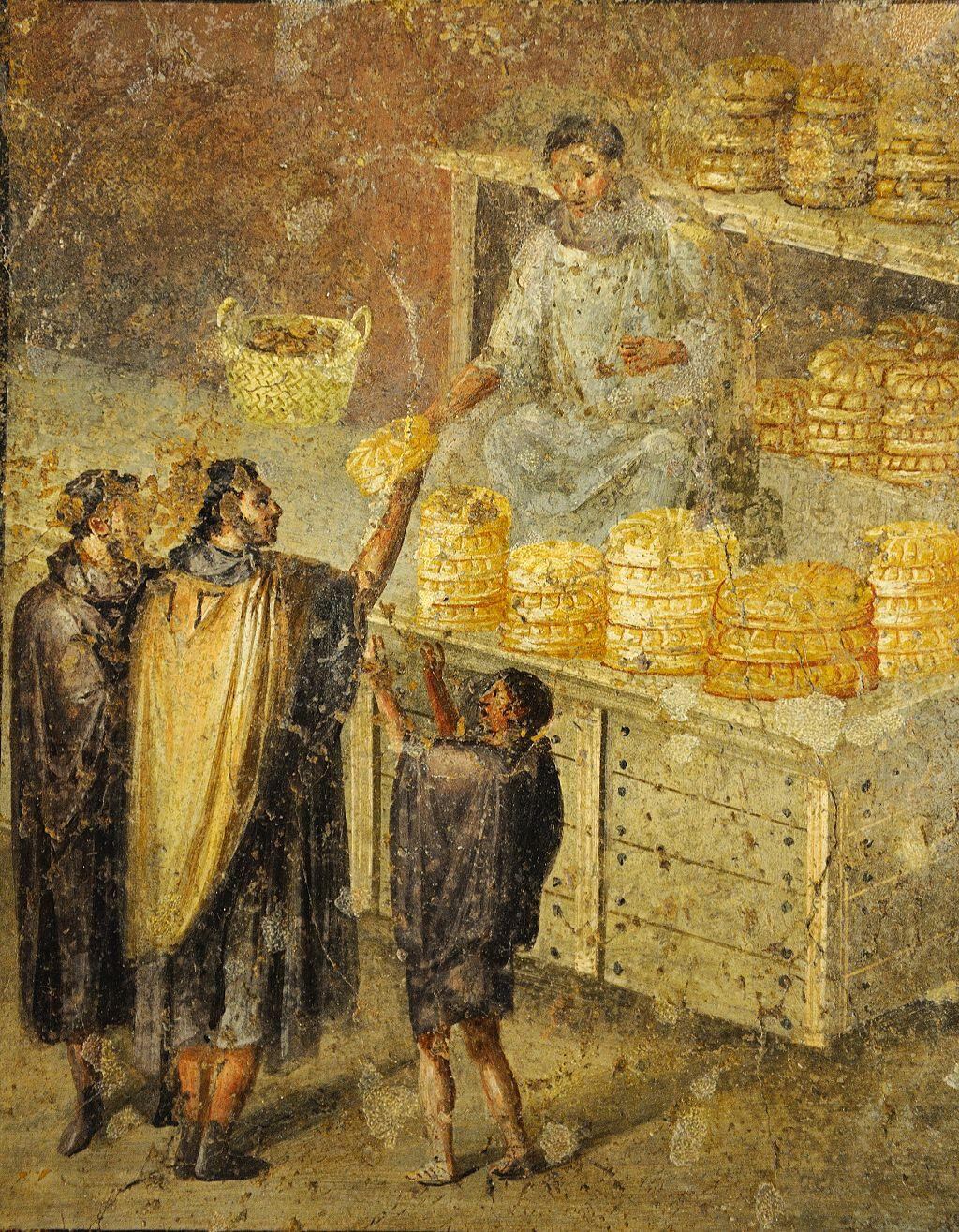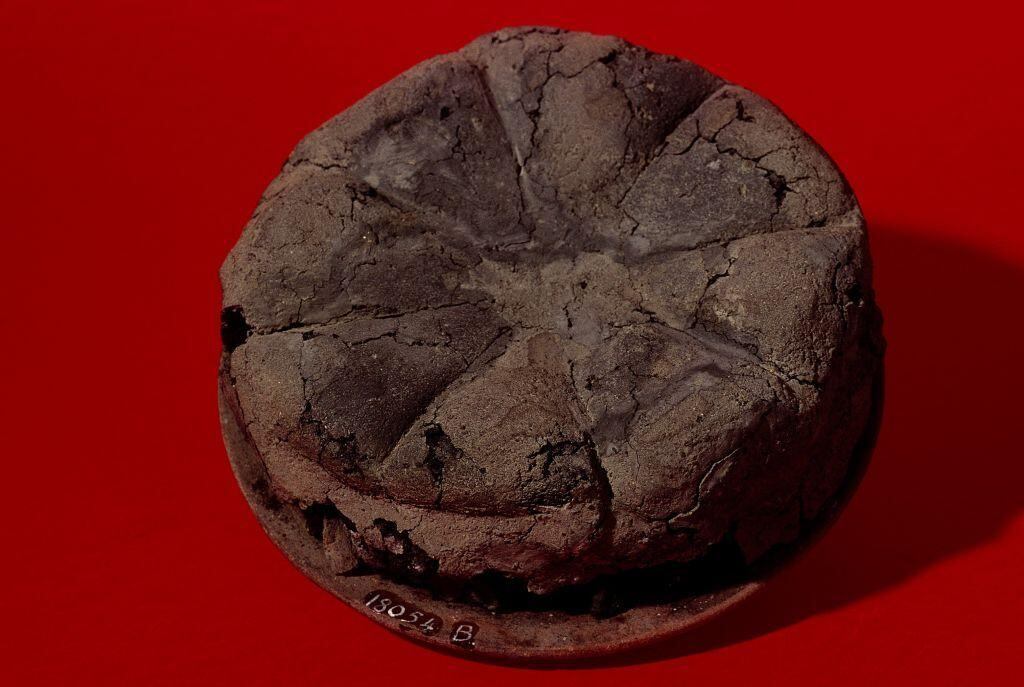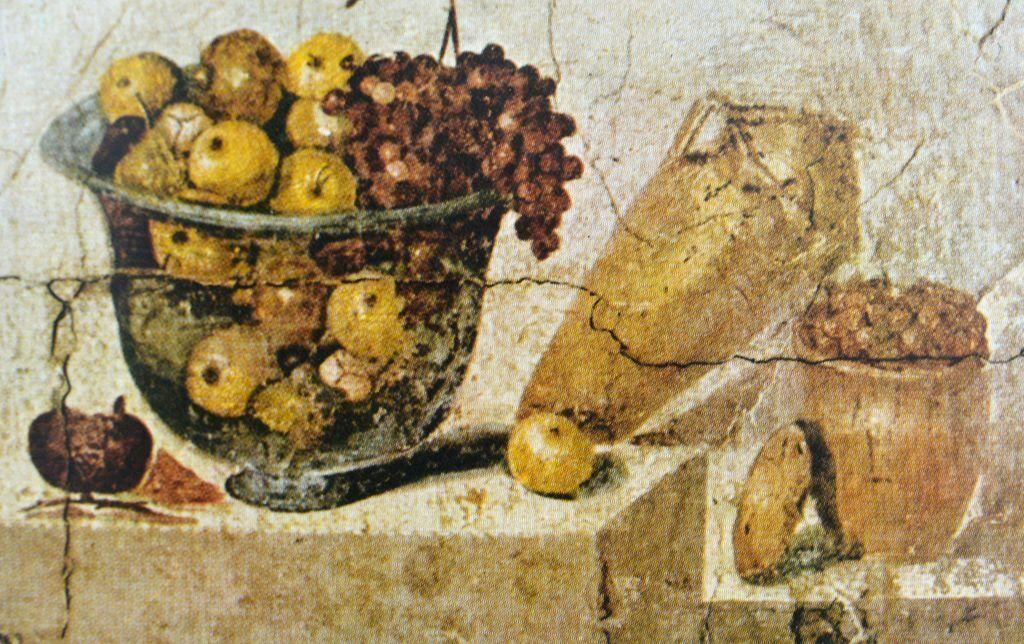It’s no secret that the ancient Romans enjoyed their feasts.
It is easy to imagine them reclining voluptuously on divans, dressed in simple but elegant togas, in luxurious halls or gardens, while being served all kinds of delicacies.
LOOK: How the theft of hundreds of pieces from the famous British Museum in London was discovered
Extravagant delicacies such as parrots, peacocks, ostriches or flamingos, as well as pheasants, shellfish, deer or wild boar, and the perennial favorites: fleshy figs.
With an empire that stretched from Britain to Baghdad, and a keen sense of pleasure, delicacies came from everywhere, as did the spices to season them: pepper and sugar from India, cumin from Ethiopia, sumac from Syria. …
All accompanied by rivers of wine, drunk from silver cups with two handles, while a lyre or a poem can be heard in the background, acrobats juggle and a leopard strolls.
But nights like these were a luxury only the elite could afford, something that wouldn’t surprise you.
The most curious thing is that eating at home was also a luxury, as historian Mary Beard tells us in the BBC series “Being Roman”.
Furthermore, despite rumors that Emperor Claudius went to bars in his youth and Nero escaped from his palace to visit them, it was considered that going out to eat was in bad tastesomething the lower class did.
And he did so because, in reality, it was a necessity: many Romans were unable to prepare and cook food, or were too busy to make food at home.
Thus, for the Roman people, bars and restaurants were an essential part of everyday life.
Without the possibility of inviting friends home, as the rich did, they were also places where they could socialize, play and even flirt and perhaps find love.
This explains why in Pompeii, that city whose future was suspended on October 24, 79 AD, they were found under the ashes of Vesuvius. more than 160 bars.
And new research is uncovering more and more about what the favorite dishes of ordinary Pompeians were and were.
A stone on the road
Before heading to Pompeii, let’s stop for a moment in Isernia, a city halfway between Rome and Naples, where a stele was found that gives an idea of the evil of some of these establishments.
It was intended to be a tombstone in honor of two innkeepers, but its legend made many experts suspect that it was more of an advertisement to promote their inn.
He begins by stating: “Calidius Eroticus did [este monumento]while he was still alive, for him and for Fanniae Voluptas.”
“Calidius Eroticus means really hot sex,” Beard clarifies. And Voluptas means pleasure.
So, according to the stele, they were called Mr. Sex and Mrs. Sex..
For the historian, these were probably not their real names “but rather a kind of commercial names, but which tell us something about the culture of the inns”.

In the background, the sculpted scene of a man in a traveler’s cape and a mule, handing money to presumably Erotic, illustrates a brief dialogue about “life in the bar”.
It says like this…
Client: “Innkeeper. Let’s do the math“.
Innkeeper: “You have a wine sextar there, which is an ace (Roman coin). The bread, an ace. And the sauces, 2 aces“.
Client: “He is well“
Innkeeper: “For the girl there are 8 aces“.
Client: “That’s okay too“.
Innkeeper: “And hay for the mule: 2 aces“.
Client: “That damn mule will be my ruin!“.
Here it is: an old joke.
Although it didn’t steal a smile from him, what’s engraved in stone gives us a glimpse into the lively tavern culture of Ancient Rome.
Patricians and plebeians
Something the comic scene suggests is a link between inns and prostitution.
“It possibly existed,” notes Allison Emmerson of the American Academy in Rome: “Elite Roman authors talked about this connection: going to eat at the bar and maybe hiring a sex worker.”
However, he warns, “this was in the category of ‘things low status people do’So that raises suspicions.”
Claire Holleran, an ancient historian at the University of Exeter, agrees that these pub portraits should be treated with a pinch of salt.
Most of our written information comes from top-notch authors.
Their prejudices about the habits of their social inferiors, or their distaste for the rich who stooped to doing things like eating or drinking in public places for fun, could influence their views.
However, we have more and more information to verify whether what they said matches the archaeological evidence..
Recent discoveries in Pompeii show that the commoners they spoke of had a wide range of options.
There was everything from fast food to private dining rooms that imitated the lifestyles of the rich and famous.
Smaller venues were standing room only, while others offered a more relaxed experience with tables and benches. Some establishments even had sofas to lie on.
Bars were usually located on street corners or busy main streets.
The one that borders the Pompéia theater district, for example, had at least 13 stores, all competing for customers.
Many had a service counter facing the street, allowing customers to be served on the go.
Studies of bars in Pompeii show that around 80% of them had a kitchen.
They often stood at the counter or on the threshold of the place, to release the smoke and, at the same time, seduce passersby with the aroma of the food.
“If you look at elite writers of the 1st and 2nd centuries like Horace, Martial or Juvenile, they all use similar adjectives to describe these neighborhood bars: ‘greasy, dark and gloomy’ and ‘hot and dirty’“, says Hollerman.
And he adds that “there was probably some truth” in what they reported.
This is because, “the majority of our evidence reveals, much of the hot food sold was greasypork derivatives, such as sausage, meatballs and tripe.
“As you can imagine, when cooked or heated, they filled the place with smoke and grease.”
The philosopher and doctor Galeano even stated that “it was known that human meat tasted like pork because sometimes innkeepers served it instead of pork and no one noticed the difference”, says the historian.
“I don’t think that’s necessarily true, but it says something about the reputation the innkeepers had.”
Bread and wine
But it wasn’t all pork.
Analysis of fecal remains revealed other foods served in Roman bars, including olives, nuts, fruit and lamb.
“A complete diet”Emmerson emphasizes.
The bars certainly had access to lots of fresh produce and local wineries were used.
For some items, they went further; For example, they imported peppercorns, a sign that it was not just a question of sustenance, but also of flavor.
And, of course, there was bread and wine.
That’s what the Eroticus client consumed, remember?
Bread was a staple of the Roman diet and thanks to numerous representations and charred remains, we know a lot about it.
Here are two of the many images:


Bread was the main dish of the poorest… but it was also popular among the rich.
And, as the Eroticus joke tells us, it was usually eaten with side dishes.
The Latin word used in the inscription is pulmentarywhich can be translated as sauce, condiments or anything eaten with bread.
According to ancient literature, the pulmentary It can be made with a wide variety of ingredients, and can be sweet or savory.
Seneca noted, for example, “If I have bread, I use figs as a condiment,” while Pliny preferred apples and pears cooked in wine.
It can also be accompanied with cheese, or simply with salt, combined with “fragrant additions”.
Now, if what you wanted was a night of drinking and fun, the frescoes in the bars show scenes of people playing board games, accusing each other of cheating, and even an owner telling two men: “If you want to fight, They’re going to get out of here!”
All this, washed down with wine, of course, almost always red..
It was much stronger than what we drink today, so it was diluted with water, sometimes too much for some people’s tastes, as the complaining graffiti attests.
It was served hot or cold and often seasoned with ingredients such as pepper, honey or cumin, or whatever mixture discerning customers required.
Carefully analyzing everything in a newly discovered bar, says Sophie Hay of Pompeii Archaeological Park, they found something unusual.
“We found charred remains of broad beans, with a small cup next to them. At first glance it seems like a mystery, but after unraveling it, we discovered that broad beans were added to the wine to improve the flavor.
And the price list?
Well, those at the Hedones Tavern in Pompeii were frozen in a graffiti found at the entrance:
“Hedone says:
“Here a person can drink for an ace.
“If you give two, you will drink better;
‘If you give four, you will drink Falernian (a cult wine of the time).’”
It’s that simple, yesterday as today, you get what you pay for.

Source: Elcomercio
I am Jack Morton and I work in 24 News Recorder. I mostly cover world news and I have also authored 24 news recorder. I find this work highly interesting and it allows me to keep up with current events happening around the world.






